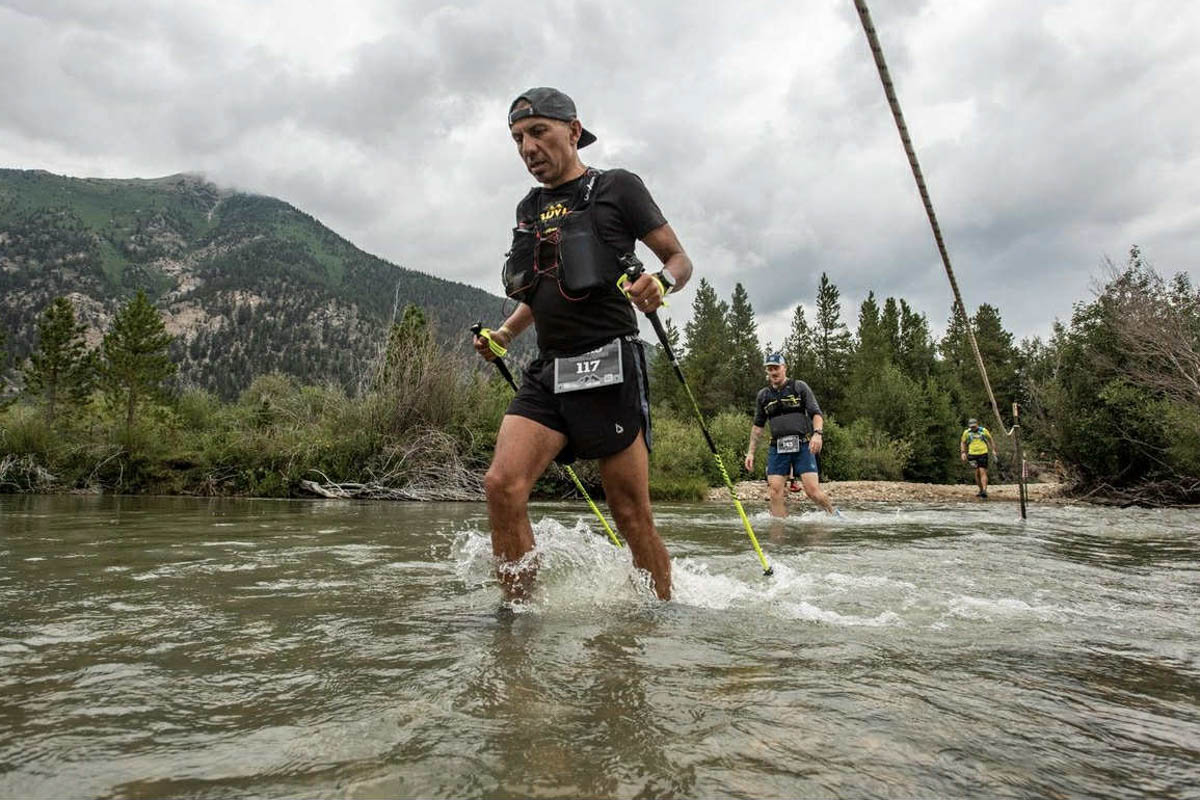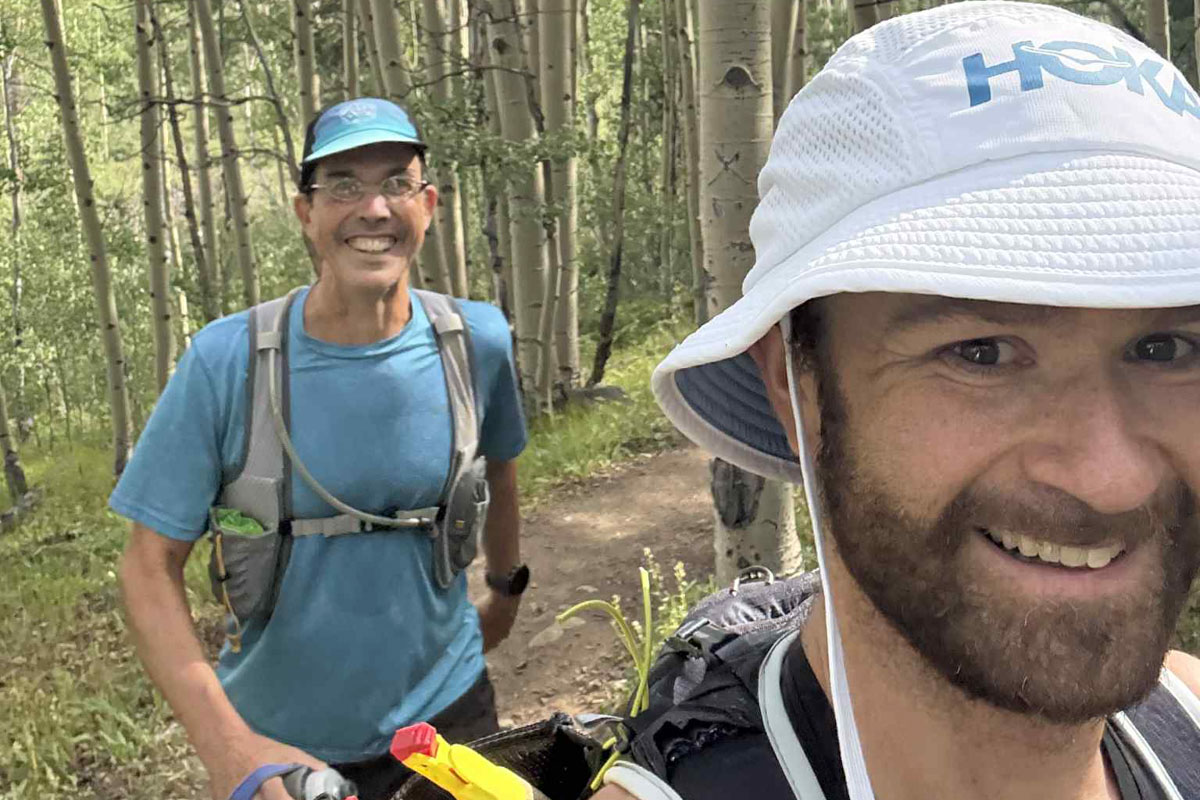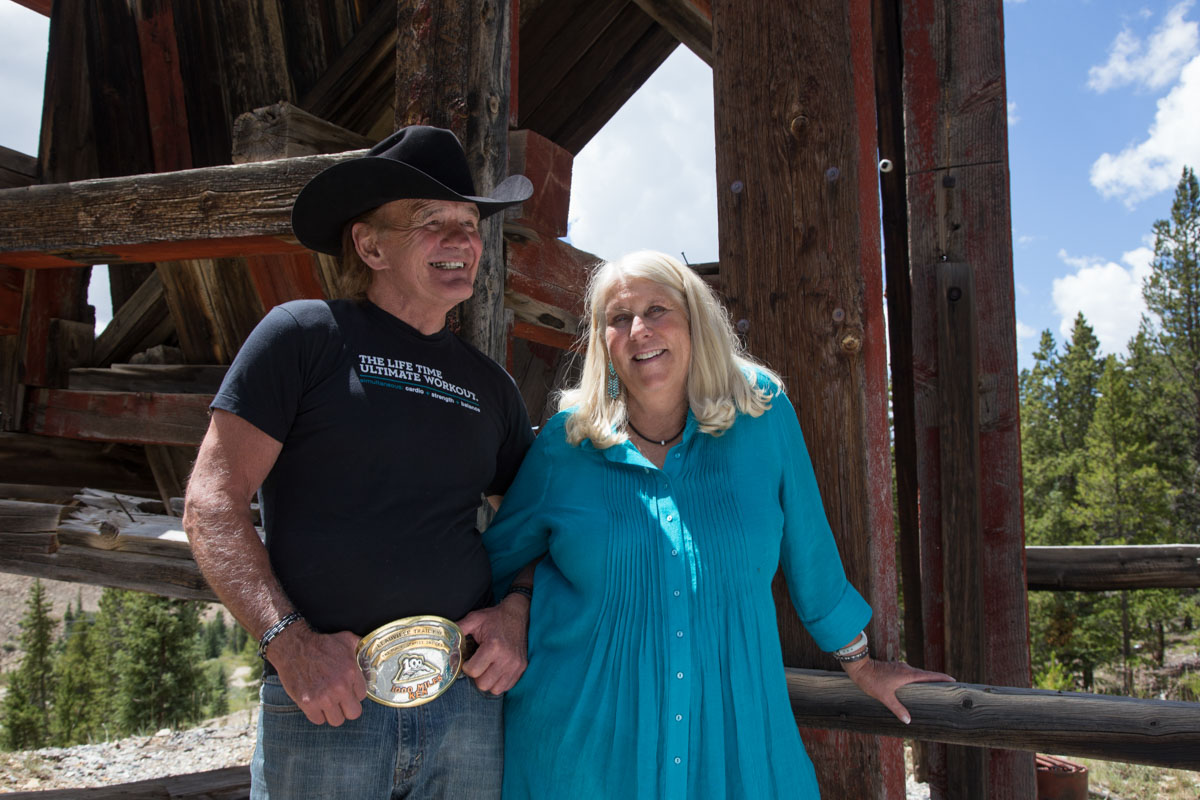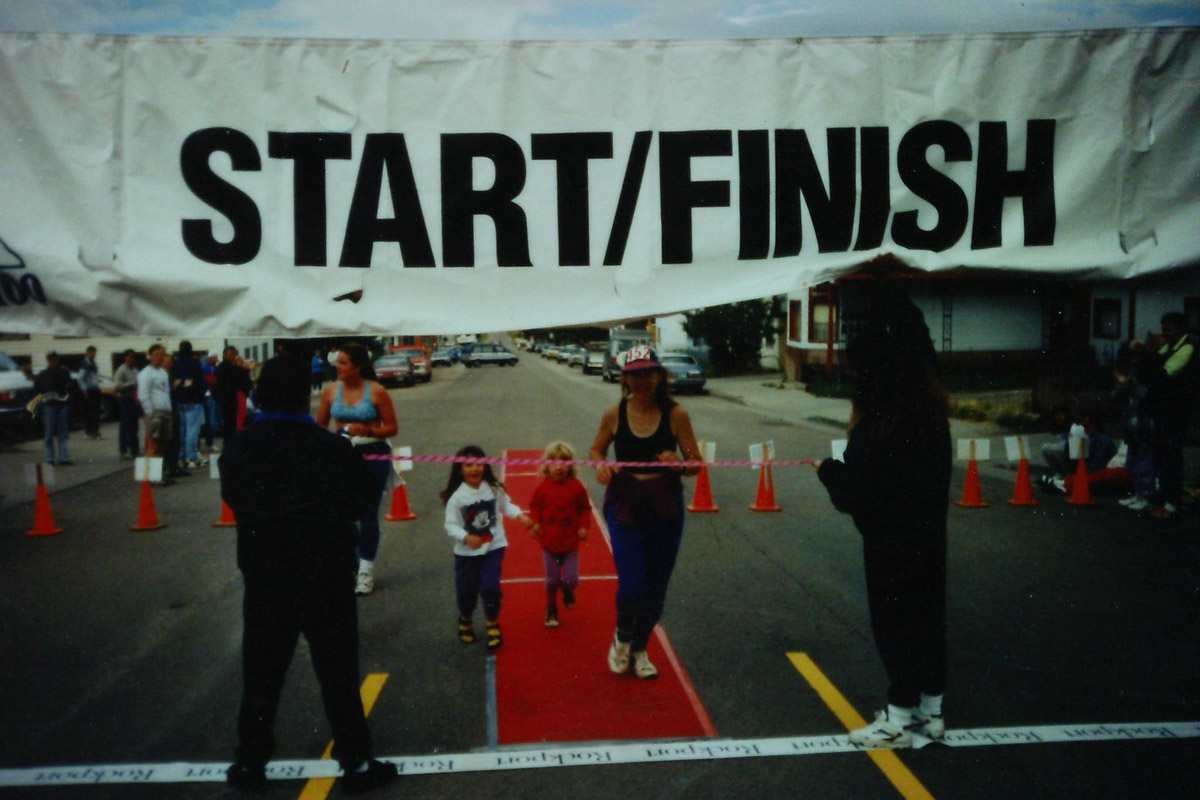This weekend, the small mountain community of Leadville, Colorado, will swell to the seams as thousands of racers, pacers, crew, families, and spectators travel in for the 2025 Leadville 100 Mile, which starts on Saturday, August 16. The race more than doubles the population of the town of about 2,500 full-time residents and fills every hotel, rental house, and campground in the area.
Founded in 1983 by Ken Chlouber, Merilee Maupin, and Jim Butera to bring tourist money into a struggling mountain town, it’s one of the oldest and most iconic 100-mile races in the country and has undergone significant changes, evolving from a small event that saw 45 runners in its first year to a race series covering seven weekends of the summer, drawing thousands of people to town to run and ride their mountain bikes. The race is synonymous with the town of Leadville and has shown the economic power of these types of events and the good that they can bring to a community.
Over the years, the 100-mile run has transitioned from a small community event to one of the most sought-after events in ultrarunning. And as with any change, there have been growing pains, but throughout its history, at the root of the event, it seems that perhaps more has stayed the same than actually changed.
A Brief History of Leadville
Leadville, currently the highest incorporated city in the United States at an elevation of 10,154 feet, has its roots in mining, like most of the mountain towns in the area. It had its first boom in the 19th century with the discovery of gold in 1860. This first round of prospecting brought in 10,000 residents, eagerly building a town to support the miners and their families. Another boom, this time of silver miners, came in 1877, when the city grew to more than 30,000. At this time, Leadville was the image of wealth and civilization, full of hotels and wealthy entrepreneurs.
In the 1930s, after World War I, metal prices fell and the town dried up to around 4,000 residents. From the early 1900s to the 1980s, Leadville had peaks and valleys in its sustainability. With World War II, the U.S. Army’s 10th Mountain Division came to nearby Camp Hale in 1942 to train on skis. However, unlike the nearby Vail, Aspen, and other small mountain towns, Leadville did not use this accolade to reinvent itself as a ski town, but remained true to its mining roots, with the vast majority of its jobs being related to the Climax molybdenum mine.
The recession of the 1970s hit Leadville hard, eventually closing the mine in 1981. Out of work, citizens were forced to move or try to make their rural lives work with the loss of employment. Some were able to find careers in the small town, while others made long commutes to work in the nearby Summit County or Vail Valley.
To add to the hardship, Leadville was part of an 18-square-mile area designated a Superfund site in 1983 due to the toxic metals and pollutants left over from the mining days. The town was economically struggling and considered environmentally unsafe when the idea of the Leadville 100 Mile was born.
Early Years
Realizing that his town needed a lifeline, local businessman Ken Chlouber thought tourism would be the best way to grow the economy. He understood that if people had to stay the night, they would also support the businesses. The idea of the race originally came from Jim Butera, a well-known race director and president of the Colorado Ultra Club at the time. Butera had inklings of creating a 100-mile race a few valleys over, and Chlouber convinced him that Leadville could serve as the event’s home. The two joined forces with local realtor Merilee Maupin and created a plan for a race. Butera designed and measured the route and secured all of the permits, and in 1983, they held their first Leadville 100 Mile. Butera would act as the race director for the first few years.
A much more detailed history of the race can be found in “Leadville Trail 100: History of the Leadville Trail 100 Mile Running Race,” written by Marge Hickman and Steve Siguaw.
Chlouber explains, “We were pure of heart when we started this. We had three foundations that we wouldn’t detour from.” Their first principle was that everything was for the town of Leadville. Chlouber recounts that the town was devastated in 1982, with businesses closing and people leaving the town. “The first rule was that we would not ask any local businesses for financial support. We’d ask them to come and help and volunteer, but our primary purpose was to bring them money.”
Second, the race would always have to start and end in town and have Leadville in its name. This race would embody Leadville at its metaphorical core, but also ensure runners, pacers, and crew would essentially be obligated to spend their dollars locally.
Third, and to Chlouber, most importantly, “No one, not Merilee, not me, no one would be selfish nor self-serving.” For this pillar, Chlouber provides the example that during the 14 years he ran the race, he paid the same entry fee as everyone else.

Anton Krupicka (center) minutes before the 2006 Leadville 100 with pacers/crew Julian Boggs (left) and Alex Nichols. He would go on to win the event. Photo courtesy of Anton Krupicka.
The pair launched the race in 1983 and had 45 people at the start line. Those early days of the race were hard work and low-tech, not just for Chlouber and Maupin, who were the only employees, but also for the runners. In the early 1980s, the concept of ultramarathons was still new. Western States 100 started in 1977, but the sport had yet to take off. Leadville 100 Mile runners were blazing a trail in a fledgling sport.
Melissa Lee, formerly of Leadville, now a resident of Salida, Colorado, started running ultras in the 1980s. She explains, “People used to look so much more gritty. We wore white button-downs and cut the toes out of our shoes because we had to be resourceful with what we had.” Lee recounts borrowing a fishing vest from a friend so she would have enough pockets to carry water and snacks, as much of the race had limited support.
While the runners were finding ways to be creative, Chlouber and Maupin were working hours on end with just volunteer support. In the months leading up to the race, they’d be receiving entries, typing out lists and letters, and preparing the course. On race day, Chlouber recounts that he would often sound the startline gun and jump into the race himself. However, when the runners went home, there was still no rest for the duo. “We would have the athlete meeting in the Sixth Street gym,” Chlouber says and recounts how it would go from 100 racers in the gym for awards to just him and Maupin, alone to do the dirty work. Maupin adds, “I typed the finisher list for the newspaper, and then we’d go out and start picking up after the runners.”
A Boom in Boomtown
Several factors contributed to the growth of the Leadville 100 Mile between 2000 and 2010. First, there was the growing popularity of ultrarunning in the late 1990s and early 2000s, likely due to the expansion of the internet. Runners could sign up online and research races from the comfort of their homes. In the past, it was all word of mouth or print media. Dale Garland, run director of the Hardrock 100, first discovered the Leadville 100 Mile while seeing a poster as he passed through town while running the Colorado Trail in 1986. Then, there was an explosive increase in popularity around 2009, coinciding with the release of Christopher McDougall’s book, “Born to Run.”
For Brian Passenti, a nine-time finisher and running coach, the book was his stepping stone to running his first 100 miler. He recounts getting the book from a friend on a cold winter day and how the stories of the Leadville 100 Mile and the Tarahumara, indigenous people of Mexico known for their ability to run long distances, inspired him to sign up.

Brian Passenti, nine-time Leadville 100 Mile finisher, was initially inspired by the book, “Born to Run.” Photo courtesy of Brian Passenti.
“I think there’s something to being naïve,” says Passenti.”I had never done 100 miles before this race, but the race was great. The community was super welcoming, there was buzz about it. There was hype, but not nearly to the degree it is now.”
With the increasing interest in the race, Maupin and Chlouber fell back to their three original pillars. There were no big egos allowed in the race, no matter how premier it was becoming in the eyes of the ultrarunning community. Chlouber recounts upsetting some elite athletes with their stance, and says, “We were limiting entries back then. We knew we had a limited a medical community that had to respond to anything in town, not just the race.” He says there were several times that “these hotshot runners would call us and say, ‘Oh, you gotta’ let me in. I won this race, and I won that race.’ I would respond, ’Congratulations, but try again next year.’”
Maupin and Chlouber were set on keeping the race authentic and community-centric. They were getting racers from around the country and even some from abroad. With the spotlight on the Leadville 100 Mile and the growing popularity of the sport, some big-name corporations expressed interest in buying the event.
The first major offer came in 2009 when an investor group offered to fly Chlouber and Maupin to any place in the country to meet about potentially selling the race. Being true bootstrap Leadvillians, they agreed to meet, but insisted on paying their own way. Chlouber recounts, “They were very nice people, but also very straightforward, and they offered us cash money, a huge amount of cash money.” He says it was the kind of cash that would have allowed both him and Maupin to retire. Ultimately, after debating the merits of the offer, they decided that the cost would be too high for the town of Leadville.
Chlouber says, “They told us upfront: They were in it for the money. They said they would open all the doors, letting in all the racers they could, getting all of the sponsors they could find, and collecting all of the interest for a profit.” Maupin and Chlouber knew that this would destroy the town and the trails. At the time, they believed they could not, in good faith, sell the race to anyone.
But in 2010, Maupin suffered the unbelievable loss of her daughter, Megan, and entered one of the darkest and most difficult times of her life. While technology had made the race easier to produce, it was still a high mental load for someone intensely grieving a loss. Given the new circumstances, the race was no longer sustainable for the two to shoulder alone.
Life Time, a company operating a chain of fitness centers around the country, had been a title sponsor of the event in 2008 and 2009, and Bahram Akradi, the CEO, had previously expressed interest in purchasing the event outright. Akradi had participated in the mountain bike race and had become friends with Chlouber and Maupin. In 2010, after traveling to Minnesota to celebrate Christmas with Akradi and his wife, Chlouber and Maupin ultimately decided to make the sale, contingent on Akradi agreeing to maintain their three principles. “Not only did he promise to do that,” says Chlouber, “but he told us that we could reach out to him directly if there was anything happening that we did not agree with. We have never had to do that.”
Growth and Community
Even today, now 15 years after the sale, Chlouber and Maupin still call the shots, but now they have the support of nine other employees and teams of volunteers. Maupin explains, “This ma and pop duo pushed the big rock up the hill just as long as we could, but then Life Time came in and gave us wings to really take off.”
As the race grew in production value, it also added more participants, from around 500 in 2009, the year before the sale, to around 800 today. The Leadville 100 Mile mountain bike event was started in 1994, and the series has added a 50-mile bike race and a stage race, as well as 50-mile, marathon, half-marathon, and 10k running races more recently, ensuring that the town now bustles with athletes throughout the summer. They also have a Leadman and Leadwoman competition for those who want to participate in all the events, in addition to a variety of training camps. There is a lottery, and it becomes increasingly difficult to get into the race each year as demand grows. In terms of bringing a tourist economy to a struggling town, there’s no argument that the Leadville 100 Mile worked. Other races, including the Hardrock 100, were inspired by and built on the same concept, also with great success.
With growth came a learning curve, of finding a sustainable number of participants that the local infrastructure could support, appropriately supplying and staffing aid stations for a larger field, and maintaining a familial feel amongst it all. Many in the ultra community know there to have been a couple bobbles in the years following the ownership transfer, but they also know that the event has course corrected each time and find balance.
As for the villainization of a big corporate takeover, Chlouber has some financial facts: “People complain about it being owned by a big corporation and that it is all about the money now. Life Time is a $3-billion-plus corporation. Whatever the Leadville 100 Mile generates for them is only a blip in their financials.”
But the amount of money that the race generates for the town is significant. With the success, Maupin and Chlouber were able to create the Leadville Trail 100 Legacy Foundation in 2002, which gives each graduating senior from Lake County High School a $2,000 scholarship to use toward any higher education, be it an Ivy League school or a trade certificate. Chlouber and Maupin speak of the students who have received the aid and found success with the same pride and adoration reserved for family members. For them, it is not a donation, it is an investment in their community and the next generation.
Modern-Day Racers
As with any event that has been around for a long time, the Leadville 100 Mile was destined to change as the sport grew. And as with any change, not everyone liked it. But one has to ask, at the root of it, has the event really changed that much?
Ryan Sheehy of Texas is preparing to run for the first time this year. Inspired by “Born to Run,” 10 years after the book’s release, Sheehy started running himself. It took six years to get to the start line, but he will be lining up with 800 other runners on the dark streets of Leadville on Saturday morning.

Ryan Sheehy and his pacer Rick Russel checking out Leadville 100 Mile course during a training run. Photo courtesy of Ryan Sheehy.
Fundamentally, runners like Sheehy, many of whom will be clad in carbon-plated shoes and wearing heart rate monitors and GPS watches, aren’t really that much different than the racers during the early years of the event.
Sheehy is bringing his whole family and is staying multiple nights. He explains his motivation to run this race, as opposed to a low-elevation race closer to home, by saying, “I am going to be doing something really challenging and hard and all that, but I want [my family] to experience race-day vibes, and I want them to experience one of the most historic places and races, Leadville as a city, and the Leadville 100 Mile as a race in the country.” He’s excited for his wife and kids to have new experiences in a beautiful place.
While Passenti and Sheehy might have more access to technology and gear than Lee did in the 1980s or Passenti did when he first started running the event, their goals and inspiration are remarkably similar. In some form, they want to push beyond their known limits, share a connection with the natural world, and find inspiration in the rugged mining town of Leadville.
They also acknowledge that there are growing pains of any event of this size, both for the community and the racers. Sheehy asks the hypothetical questions, “Will the Winfield aid station have ice if it’s 75 degrees Fahrenheit out. Will the porta-potties at the Outward Bound aid station be completely overflowing?” Regardless, he’s excited to take on the journey, whatever it may bring.
While the hype and energy around the event have increased over the years, with Chlouber and Maupin still at the helm and sticking to the values of their original three pillars, perhaps at its core, the race hasn’t changed much at all.

Brian Passenti (left) with race director, Ken Chlouber, after finishing the 2023 Leadville 100 Mile. Photo courtesy of Brian Passenti.
Call for Comments
- Have you had a chance to race the Leadville 100 Mile? What was your experience like?
- How have you seen your favorite ultra races change over the years?





